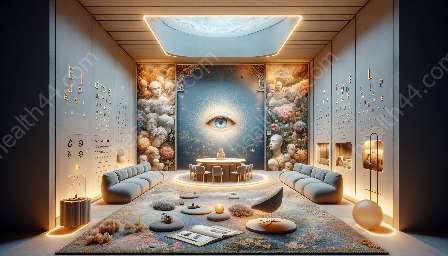Visual illusions are a captivating aspect of human perception, playing a crucial role in vision psychology and the field of vision care. In this comprehensive guide, we will delve into the intriguing world of visual illusions, exploring their scientific foundations, real-world implications, and their connection to perception and vision care. From optical illusions to cognitive phenomena, join us on a journey to unravel the mysteries and applications of visual illusions.
The Science of Visual Illusions
Visual illusions, also known as optical illusions, are perceptual phenomena that consistently trick the human brain into seeing something that does not correspond with physical reality. These illusions occur due to the complex ways in which our brain processes visual information, often resulting in misinterpretations of reality. Through the study of visual illusions, researchers aim to gain insights into the intricate mechanisms of human vision and perception.
One of the most iconic examples of visual illusions is the Müller-Lyer illusion, in which two lines of identical length appear to be of different lengths due to the addition of arrows at the ends, creating the illusion of depth and perspective. Similarly, the Ponzo illusion demonstrates how our perception of an object's size and distance can be influenced by contextual cues, such as converging lines and perspective.
From geometric illusions to motion-induced illusions, the diverse range of visual illusions showcases the remarkable capabilities and limitations of human vision. By studying these phenomena, vision psychologists and researchers can deepen their understanding of the complexities of visual perception, leading to advancements in various fields, including vision care.
Visual Illusions and Perception
Visual illusions offer valuable insights into the mechanisms of human perception, shedding light on the intricate processes involved in interpreting visual stimuli. Our perception of the world is not always an accurate representation of reality, as evidenced by the compelling effects of visual illusions on our visual experiences.
Moreover, visual illusions challenge the notion of objective reality, highlighting the subjectivity of human perception. Through experiments and studies on visual illusions, researchers can investigate how cognitive processes, cultural influences, and individual differences shape the way we perceive the world around us. Examining the interplay between visual illusions and perception enriches our understanding of human cognition and the complexities of the mind.
Furthermore, the study of visual illusions has practical implications in fields such as advertising, design, and art. By harnessing the principles of visual illusions, designers and marketers can create impactful visuals that capture and manipulate the attention of viewers, leveraging the intriguing nature of perceptual distortions to convey messages and evoke emotions.
Visual Illusions and Vision Care
Visual illusions also intersect with the realm of vision care, contributing to the understanding of visual disorders, rehabilitation, and the development of optical solutions. Individuals with visual impairments or conditions such as amblyopia and strabismus may experience altered perceptions and visual distortions, making the study of visual illusions particularly relevant in the context of vision care.
Furthermore, vision therapists and practitioners incorporate visual illusions as part of vision therapies and exercises, utilizing specially designed stimuli to enhance visual processing, depth perception, and eye coordination. Through targeted interventions, patients can undergo training that leverages the principles of visual illusions to improve their visual capabilities and mitigate perceptual challenges.
Researchers in the field of optometry and ophthalmology also explore the underlying mechanisms of visual illusions to develop innovative diagnostic tools and treatment strategies for vision-related conditions. By examining how the brain processes visual illusions in individuals with different visual health profiles, scholars aim to refine diagnostic protocols and personalize treatments, ultimately contributing to advancements in vision care.
Real-World Applications and Future Research
Beyond their scientific and clinical relevance, visual illusions have captivating real-world applications across various domains. From virtual reality and gaming technologies to architectural design and human-computer interaction, visual illusions inspire innovative approaches that harness the complexities of human perception to create immersive experiences and functional solutions.
Emerging research also explores the potential therapeutic benefits of utilizing visual illusions in fields such as pain management and neurological rehabilitation. By leveraging the brain's susceptibility to visual distortions, scientists and healthcare professionals investigate the use of illusions to alleviate physical discomfort and enhance motor function, opening doors to novel approaches in healthcare and rehabilitation.
As our understanding of visual illusions continues to evolve, future research endeavors hold the promise of unraveling deeper insights into the neural processes and psychological foundations that underpin visual perception and its intriguing susceptibilities to illusions. This ongoing exploration paves the way for advancements in vision psychology, perception, and vision care, shaping the landscape of interdisciplinary studies that bridge the realms of visual illusions and human experience.


